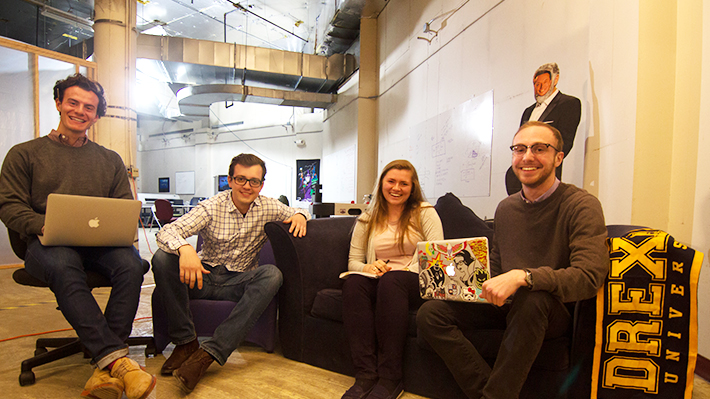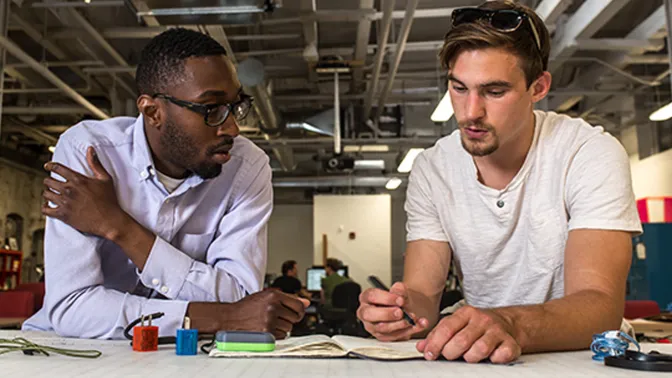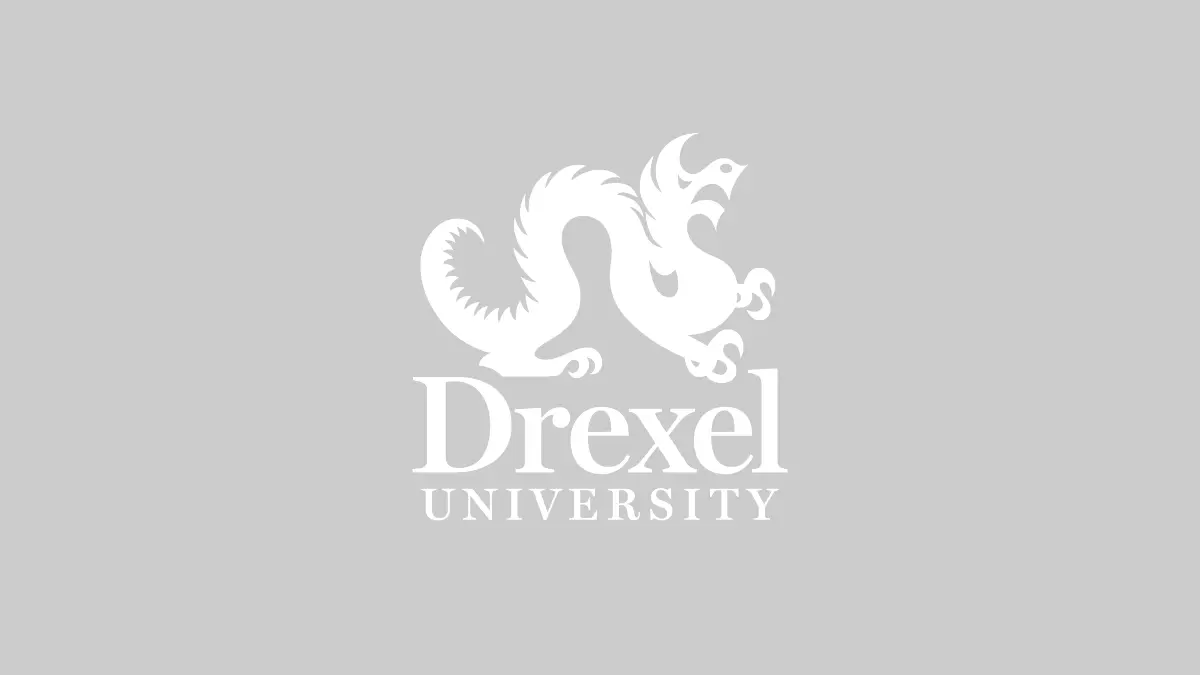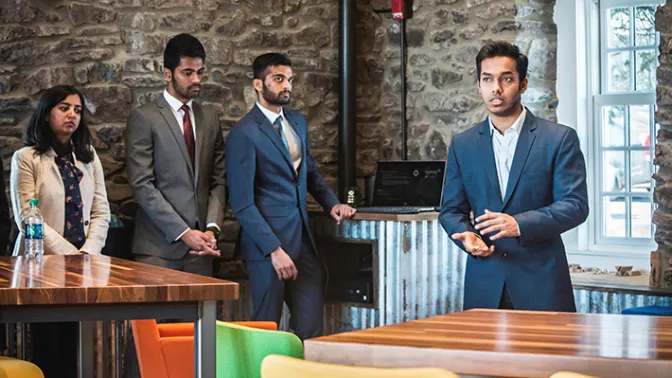
Drexel Hyperloop Has a (Business) Plan
Elon Musk’s SpaceX is planning to build the transportation network of the future – this time on land. A mile-long vacuum tube, or hyperloop, test track is taking shape at their headquarters in California, but they’re not constructing any vehicles to travel on it. The success of this futuristic technology may ultimately rest with a team of Drexel students currently working on a prototype designed to travel through the tube at over 700 miles per hour.
Drexel Hyperloop entered the SpaceX competition as one of over 1,700 teams, but after several rounds of eliminations, only 30 remain. As the prototype pod takes shape in the basement of One Drexel Plaza, a business development group made up primarily of Drexel LeBow students is formulating a business plan and providing recommendations for funding and executing a viable model.
The group of business students are working in conjunction with Clayton Parrett ‘15, an investment professional at Miller Investment Management. “We’re doing an economic business analysis. We will then send the plans to Miller for their advice and feedback,“ explains Matt Johnson, a LeBow senior and business development lead for the team.
As engineers work on creating a single-seat pod that can withstand such high speeds, the business team is grappling with gathering reliable data for something that’s never been done before. “It’ll be safer, cleaner, cheaper and faster, but it sounds too good to be true,” says Matt. “My mission is to make things as clear as possible by defining comparisons, markets and revenue sources.”
The revenue sources they’re exploring include obvious choices like passenger transport and alternative options such as high speed cargo shipment. The prototype will be a single-seat pod, but the business group will be analyzing data to determine how many seats a commercial hyperloop vehicle would need in order to be profitable.
As the group advances through the competition, and with a viable business plan in hand, they hope to reach a fundraising goal of $100,000 – of which $60,000 has already been raised. An early $10,000 investment by the University showed faith in the students’ mission and enabled them to start work on a functional prototype.


